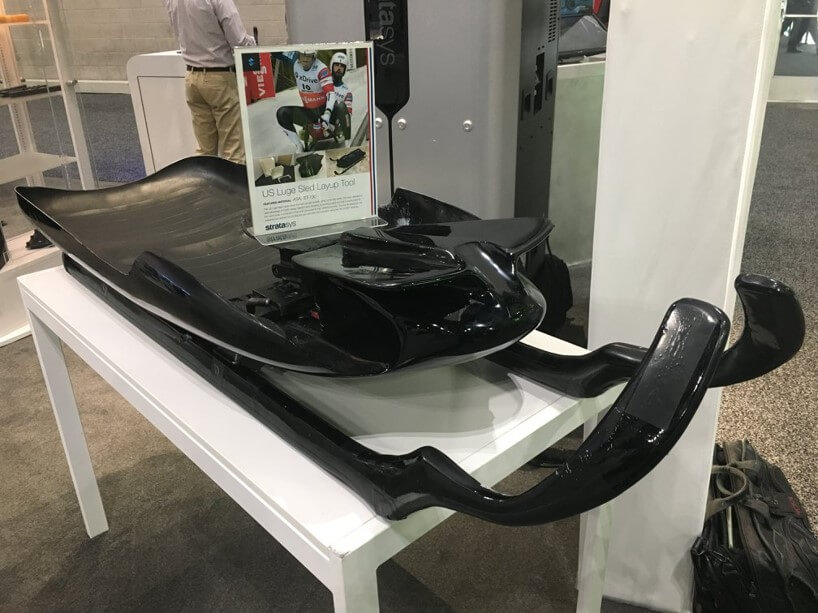 The US Luge Team tapped 3D printing (also known as additive manufacturing) technology for the XXIII Winter Olympic Games in Pyeongchang, South Korea. Stratasys played a role in helping the US Luge Team go for gold by incorporating additive manufacturing into the sleds being used in this year’s games. However, this is not the first time that 3D printing technology has made an appearance at the Olympic Games.
The US Luge Team tapped 3D printing (also known as additive manufacturing) technology for the XXIII Winter Olympic Games in Pyeongchang, South Korea. Stratasys played a role in helping the US Luge Team go for gold by incorporating additive manufacturing into the sleds being used in this year’s games. However, this is not the first time that 3D printing technology has made an appearance at the Olympic Games.
The 2018 Pyeongchang Olympics
From the Stratasys blog: “The US Luge Team quickly realized the immense potential for additive to gain a competitive advantage and worked with Stratasys engineers to develop an entirely new process for fabricating their composite sleds. In a matter of days, they were able to design, print, and test prototype sled designs, which would normally take weeks or months using their existing processes. This allowed the team to drastically reduce the design cycle, which in turn, allowed for continuous improvement to create the fastest sled possible.”
One of the main competitive advantages of additive manufacturing is its ability for customization. The team saw the value in this, and had sleds developed that fit each of their bodies. “The design freedom from additive manufacturing enabled the team to create customized sleds that were tailored to each athlete’s body, which in turn, drastically improved comfort, ergonomics and most importantly, final performance. It’s really exciting to see how this technology will push the limits of human endurance for Olympic athletes.”
The 2016 Rio Olympics
3D printed apparel was in the spotlight during the 2016 Olympic Games in Rio. These apparel pieces were designed to be lightweight, reduce the amount of wasted energy given off by the athletes and enhance overall performance through custom designs. Examples of where 3D printing technology was used:
- Nike’s 3D printed silicone protrusions that redirect air flow around runners
- Adidas’ design suits created via 3D scanners, meant to help swimmers maintain form
- Assos skinsuits created with 3D technology for the US cycling team
- Brooks 3D creation of their running shoe, Hyperions
- New Balance’s 3D printed prototype Vazee Sigma track shoes
BMW also made a splash at the 2016 Rio Olympics with its ability to track Olympic swimmers in the pool. The renowned car company, stepped off the road a dove into the pool with its LED driven motion system.
“The LED trackers will attach to a swimmers’ wrists, shoulders, hips, knees, ankles and toes through a 3D printed mounting system. The stroke and kick motion received by the coaching staff is an incredibly valuable performance tool as the data will aid in breaking down specific limb and joint angles to optimize performance.” (Sport Techie)
The 2012 London Olympics
During the 2012 Olympics in London, customized gear through 3D printing was just starting out.
“The British team was noted for wearing customized helmets, bespoke to each Olympic cyclist. Each of these helmets was based upon a 3D scan of the rider’s head and then 3D printed to verify that the fit of the final helmet would be perfect.” (Stratasys Blog)
Renowned swimming company, Speedo, used 3D printing to create goggles that have transparent parts and rubber-like parts printed in a single step. Optimizing design and streamlining the entire design process are just two of the major advantages of additive manufacturing.
As 3D printing technology continues to grow and advance, we expect to see athletes using it more and more to enhance performance and gain a competitive advantage.
_______
3D Innovations is a Product Development Company – from the 3D Design to a fully functional 3D Prototype & Product.
Subscribe to the 3D Innovations newsletter on our Facebook page!

